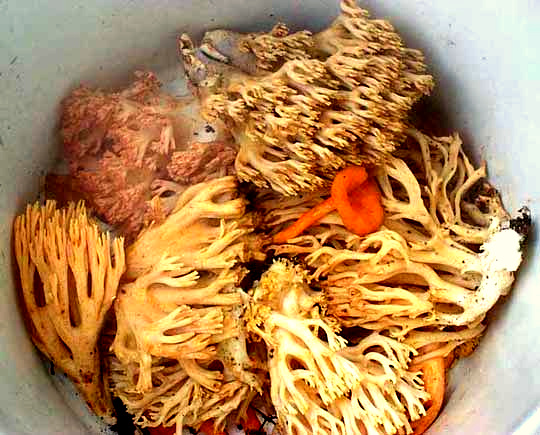(SOURCE: NCBI database)
KINGDOM: Fungi
PHYLUM: Basidiomycota
CLASS: Agaricomycetes
{Species in perhaps three orders and several families are regarded as "coral fungi"}
Coral fungi, like the one below, usually grow in dense clusters of fleshy, branched -- sometimes much-branched -- fruiting bodies arising from the ground or decaying vegetation. They draw our attention not only because of their interesting form, but also often they are colorful, plus many are edible.

At one time all coral fungi were regarded as closely related, which accounts for the group often being referred to as clavarioid fungi, because earlier nerly all referred to the genus Clavaria. However, gene analysis indicates they the coral form has arisen in several not-closely-related groups, and their similarity is largely a result of convergent evolution.
You won't spot obvious spore-producing structures on coral fungi because the spores are produced in a continuous layer of microscopic basidia covering the surfaces of the fungus's erect branches.
Because of the fleshy nature of many species, and their good taste, many species of coral fungi are eaten. The picture below shows numerous coral fungi, with one orangish chanterelle in the center, at the bottom of a plastic bucket carried by a mushroom-seeking, Otomí-speaking indigenous American in north-central Mexico.
